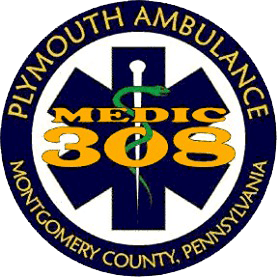
Community Education-Asthma
Welcome to the September installment of our Community Education article series. This month, we would like to focus on a topic that is all too common with fall approaching: Asthma. This ailment affects over 26 million Americans and is broken down into 8% of adults AND 8% of children have Asthma according to the CDC. We would like to talk about the mechanisms, symptoms, and treatments of Asthma so that you are aware of how to help someone should they be having an Asthma Attack.
What is Asthma?
Asthma is a condition in which an irritant causes your airway to narrow and produce more mucus. This explains why, when someone has an asthma attack, it is difficult for them to breath and why they cough so much trying to expel the extra mucus. The severity of the symptoms vary from person to person. This ailment has no known current cure but is also NOT contagious. The symptoms are easily controlled in most people but they can change over time so it is important that people with the condition follow up frequently with their doctors so that their treatments can be adjusted accordingly.
What are the signs and symptoms of Asthma?
As said above, the symptoms vary from person to person. Most common are:
- Shortness of breath
- Chest tightness and pain
- Trouble sleeping due to becoming short of breath, coughing or wheezing (usually in a certain position).
- A wheezing/whistling sound when you breath out
All of the above symptoms can worsen when a person with asthma also has a respiratory virus such as a cold or the flu. Bronchitis is also known to trigger asthma attacks.
A severe asthma attack is a life threatening emergency and should be seen at the emergency room if you experience one or more of the following and are diagnosed with asthma:
- Rapid worsening of shortness of breath or wheezing
- No improvement even after using a quick-relief inhaler, such as albuterol
- Shortness of breath when you are doing minimal physical activity
What are some treatments of Asthma?
Treatments can be sorted into long term control medications and quick relief or rescue medications. Some examples of long term control medications are Inhaled corticosteroids such as, Flonase, Pulmicort Flexhaler, and Rhinocort. Combination inhalers such as Symbicort and Advair contain a long-acting beta agonist along with a corticosteroid. There are a few other long term control medications as well.
Quick relief medications usually come in the form of inhalers. Commonly referred to as “rescue” inhalers. They can contain medication such as albuterol and Atrovent. These medications help relieve acute attack symptoms but may need to be used multiple times due to possible severe attacks or multiple attacks in a row. If you have to use a rescue inhaler a lot in a short amount of time such as minutes or hours, contact your doctor and/or seek emergency treatment.
How can I help someone having an asthma attack?
Call 911 immediately so that even more help is on the way. While waiting for EMS to arrive on scene, you can get them away from the irritant that caused the attack if possible. Since there are many different irritants that cause attacks, it may not be possible. Next would be to assist them with trying to take as deep of breaths as possible. If they have their own inhaler with them, try to have them take it. DO NOT give someone having an asthma attack something to drink or eat as they run a greater risks of choking due to the frequent coughing and increased mucus production.
This article is a brief overview so that everyone can have some knowledge of what happens during an asthma attack and how to try and help someone who is experiencing one. The best advice is to always call 911 first and them attempt to assist them until help arrives.
